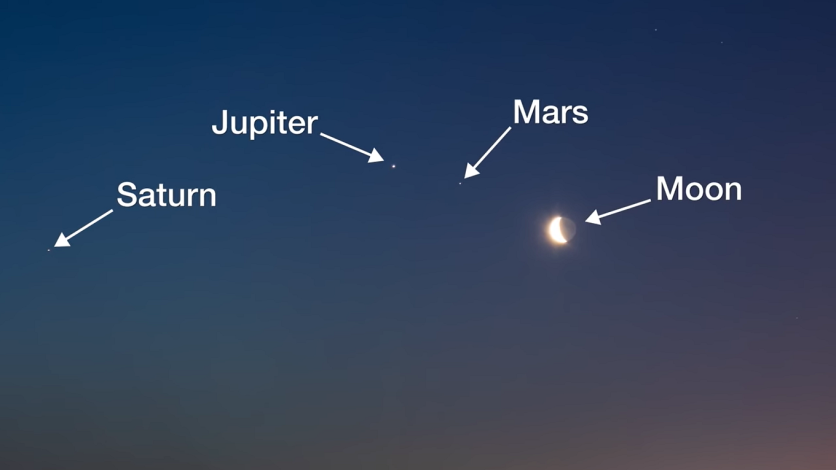The COVID-19 health crisis might be stressing everybody out these days, and the quarantine is making a lot of people sleep in since there's basically no school or work. From Tuesday to Thursday (Apr. 14 to 16), a cosmic gathering of the moon, Mars, Saturn, and Jupiter will be worth waking up early too.

An Alignment of Heavenly Bodies
According to CNET, the moon will be accompanied by three planets in our night sky from April 14 to 16 just before dawn.
The three planets, Mars, Saturn, and Jupiter, will be unusually closer to each other. Although they are still miles away from each other, the distance is enough to give us a good view of all of these cosmic bodies lining up in the sky.
What's even more spectacular is each night, the moon will be "passing by" each of these planets.
So, before dawn on Tuesday, astronomy lovers will see the moon, which is a waning "pink" moon approaching Jupiter; on Wednesday dawn, it will be just below Saturn, and on Thursday, it should be below Mars.
How to Witness it?
But how could people see this rare occurrence?
Those who want to see it should be up at least an hour before sunrise or around 3 in the morning, local time, and then look at the direction of the constellations of Sagittarius and Capricorn.
Since the moon will join the planets, perhaps the best way to spot the three planets is to find the moon first.
To spot the planets in a sky filled with stars, find the dots in the sky that do not "twinkle," unlike the distant stars. Plus, they're relatively bright and extremely close to the moon, so it won't be too hard to find them.
Those who have a telescope could even have the chance to see Jupiter's moons in a straight line beside the big planet, as per FOX 5 News.
This spectacular show might have happened already this year, but this week is the last time we can see such a beautiful alignment of heavenly bodies--well, not exactly the last time since it will happen again in 2022, but that's two years from now.
More Shows in the Sky This April
April is an excellent time to be looking at the sky since everybody is still encouraged to stay home.
According to Space.com, the Lyrid meteor shower will be peaking before dawn on Apr. 22 and will include the remains of the Comet Thatcher with around 18 meteors per hour.
However, it can be hard to witness for people who live in cities due to light pollution, and that it can be tough to go out and find a nice, dark place to see the meteor shower, especially with the lockdowns and quarantine.
Additionally, the comet ATLAS will likely appear in our skies in late April, although some reports are saying that it's breaking apart now.
A few more dazzling night sky shows will happen this month, including Venus shining brightly with the crescent moon on Apr. 26. The next day, the moon will be accompanied by a cluster of stars known as Messier 35.
ⓒ 2025 TECHTIMES.com All rights reserved. Do not reproduce without permission.




